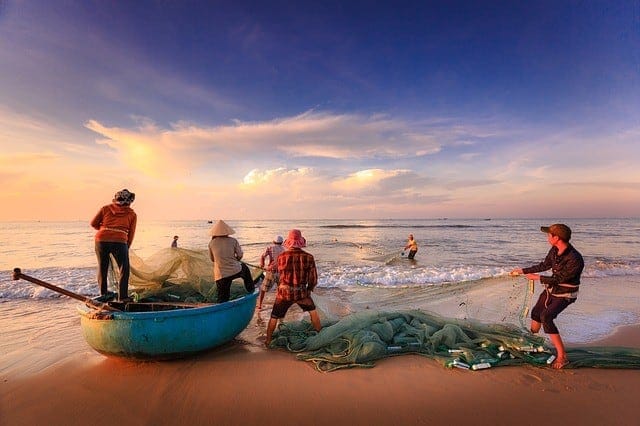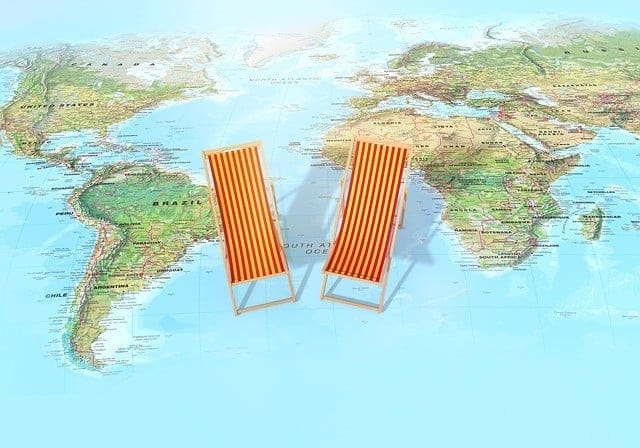Our friends are a very important part of our lives – they are the people we can rely on, a shoulder to cry on and someone to have a great laugh with. They are almost like family and we often spend a lot of time with them. That makes travelling together seem the logical step. But sometimes, things can go wrong – so how can you travel with friends and be sure to stay friends afterwards?

Why travel with your friends?
One of the top reasons to travel with friends is that it is better than travelling alone. More than that, you and your friend or friends have different experiences, personalities and approaches and this works well for travelling. Maybe you are a little shy whereas your friend is more confident. Or you like to try things and they are a little hesitant – yin and yang of sorts, complementing each other.
Having your friend along can make the boring parts of the holiday more interesting. Bus, plane or train journeys are a necessary part of travel but can be a bit boring. If you are travelling with your friend, however, you have someone to chat with, swap magazines with or even listen to music together.
Travelling is a great way to reconnect with friends that you have fallen out of touch with. In fact, it is one of the ways that Roses Only recommend that you reconnect with someone that you haven’t seen for a while. Going somewhere different, making new shared experiences is a brilliant way to reignite your friendship and give you a chance to clear the air on any past issues.
Planning the trip
Once you have decided that you and a friend (or friends) want to travel together, you next need to start planning the trip. And this is where you need to get very specific to make the trip a success.
- Understand what you both want
One of the main reasons that friends’ vacations go wrong is that you end up wanting different things. You want to see the museums and art galleries of the city while your friend wants to party until 3am and sleep most of the day (or vice versa). There’s nothing wrong with either approach but you want to have some shared ground. So, understand what you both want from the trip and how this matches up – museums one day, party on the night, sleep the next day then repeat for example.
- Map out where to stay
Another area people can disagree on is where to stay. Some of us are pretty casual and will sleep anywhere that is clean. Others prefer the finer things in life and want a three or four-star hotel as a minimum. Some love camping while others need foundations and a fixed roof. Understand where you both want to stay before considering making a booking to avoid someone being uncomfortable and unhappy.
- Discuss money
A top cause of fights when people travel together is money so decide before you leave how it will work. For example, do you pay for your own stuff in each meal or just split the bill 50/50? If you do this, make sure one person doesn’t go for expensive wine and other a glass of water or it will start to irritate them. The same goes for other costs – decide beforehand how to approach things to avoid conflict while away from home.
- Know yourself and be honest
This might sound strange but we all have those little quirks that can create friction when you are almost living with someone for a week or two. You snore, or your friend has to have the TV on all the time. You have to have a packet of crisps before bed or your friend insists on brushing their teeth with the electric toothbrush at 3am. Know your weird little quirks and warn your friend about them. That way there are no nasty surprises, it can be made into a joke and you can prepare for it (where possible – if anyone has a sure cure for snoring, let everyone know).
During the trip
While the idea of going on holiday with a friend is that you spend time together, don’t assume you have to be tied at the hip and do everything together. In fact, it is good to have some time apart for those separate interests. Have a day to yourself and then you will have some great stories to tell on the evening when you get together for your meal.
Travelling with others means that you need to be flexible but also not too flexible – don’t let the other person make every decision as they might resent this. The ideal balance is to give on the things that aren’t super important to you and stick to your ground on the really important stuff. Say you want a day at the beach but you aren’t too worried about visiting that museum your friend likes. So stick to your guns with the beach and concede to the museum trip.
Because you are friends you likely know each other pretty well but it is different when you are practically living together. We all have bad days and when you are travelling with someone and they have such a day, it is important to be understanding and patient – and they do the same with you. Don’t take it personally, give them space if they need it or just be there for them if that works.

Conclusion
Travelling with a friend is a memorable experience if done right but can end a friendship if done wrong. That’s why planning is important, and understanding is crucial – we all have our funny little ways and when you are with someone most of the time, these come to the fore. By being flexible and understanding, you can both have an amazing time, take loads of stunning photos and have a trip you will never forget – and still be friends when you get home!
